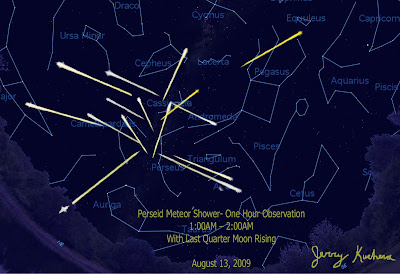 The 50th Anniversary 2011 Warren Astronomical Society calendar is complete and has been sent to the printers. The calendar features twelve original astronomical images from W.A.S. members and all currently known 2011 W.A.S. and astronomical events:
The 50th Anniversary 2011 Warren Astronomical Society calendar is complete and has been sent to the printers. The calendar features twelve original astronomical images from W.A.S. members and all currently known 2011 W.A.S. and astronomical events:
- Regular W.A.S. meetings
- Discussion group meetings
- Stargate open houses
- Major outreach events, like Astronomy at the Beach, Metro Beach Astronomy Night, and Farmington Hills Dark Skies Night
- W.A.S., Michigan, and national star parties
- Meteor showers, North American eclipses, moon phases, season changes
- Birthdays of prominent scientists, astronauts, astronomers, and others
UPDATE: The first printing is sold out. For the second printing, calendars are $20 (shipping, if needed, is extra), paid in advance.
Quantities are limited - please email treasurer@warrenastro.org by WEDNESDAY, NOVEMBER 24 to reserve yours and receive payment instructions.
Preview this year's photos:












Wondering what these images were taken or created with? The imagers report:
BOB BERTA:
"Equipment used was my 152mm A&M APO refractor, SBIG 6303e camera, AP Mount for my own pictures."
DENNIS SCHMALZEL:
"Modified Canon 450d SLR on a 80mm Orion ED, guiding with a Meade DSI3 on a 127mm Orion achromat. Each was about 15 - 5 min stacked images with Deep Sky Stacker."
DAVE D'ONOFRIO:
"My image was taken with an experimental design with some machining help from Bob Berta. It consists of an f/6.3 focal reducer, MOAG off axis guider, SBIG remote head guider, narrowband filters, adaptive optics and ST-2000 ccd. Image through 12" GPS LX200 scope in light polluted skies of Dearborn Heights.
It was taken with:
9.0 hours of Hydrogen Alpha,
1.5 hours of Oxygen III
2.3 hours of blue"
PHIL MARTIN:
"M-31 was taken at Bill Beers's spring star party this year. Omega Cent and M81-82 at the 2009 TSP. All were 5 minute stacks with a Celestron CGE mount (Celestron CGE Pro for M-31), 11" Celestron Schmidt-Cass with a Starizona Hyperstar bringing the f ratio to f/2.0, and QHY8 color CCD camera cooled to -45 below ambient.
The scope was polar aligned and guided with an SBIG ST-7 camera (1/2 second frames) through a Tak FS-78 piggy backed to the C-11.
M-31 was 11 X 5 minutes (the sun was coming up, or I'd have taken 3 hours worth, and we were skunked the rest of the party), M81-M82 12 X 5 min, and Omega Cent 8 X 5 min."
JERRY KUCHERA:
"My equipment was two eyes, a lounge chair, a printout of the night sky with constellations and relative magnitude of various stars to help me gauge the brightness of each meteor. The paper was then inserted into a plastic sleeve. A wax pencil was used to trace out the path of each meteor, the time each meteor occured and the relative magnitude of each meteor. Some meteors were quite bright.
After the observation concluded the paper and plastic sleeve were scanned and enhanced in photoshop.
For aesthetic purposes the meteor occurrence time and magnitude were deleted."
Read more...







